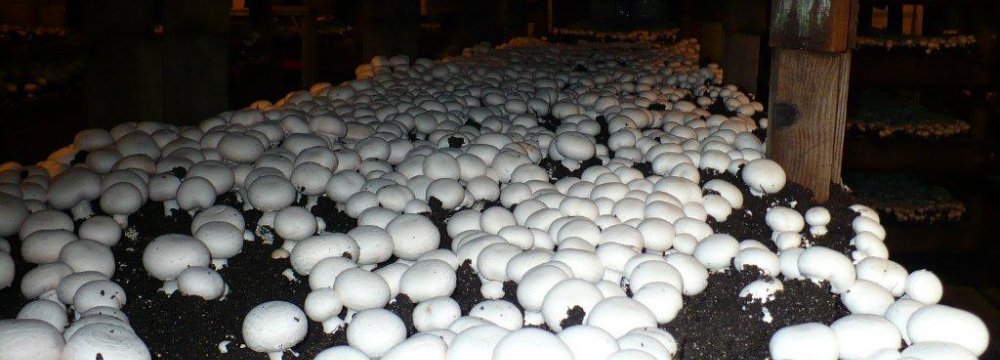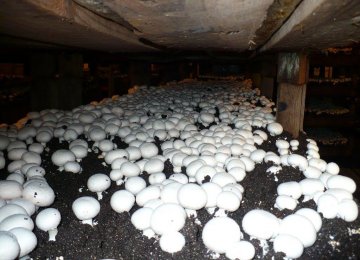Mushroom cultivation has gained attention in recent years among small-scale growers due to its relatively short crop cycle and low investment.
Many small-scale growers across the country are producing edible mushroom in areas that sometimes barely exceed 30-40 square meters. Mushroom cultivation does not need vast knowledge of farming techniques. Growers can receive short training courses at many vocational training centers across the country.
Per capita mushroom production in Iran is about 1.2 kilograms, compared to 1.1 kilograms in the world, IRNA reported.
According to Food and Agriculture Organization of the United Nations, in 2012, the world’s mushroom production amounted to 7.7 million tons, of which 5 million tons pertained to China, 761,000 tons to Italy, 390,000 tons to the US, 304,000 tons to the Netherlands, 148,000 tons to Spain, 115,000 tons to France and 90,000 tons to Iran.
China with 688,000 tons per year and the Netherlands with 278,000 tons per year are the top mushroom exporting countries in the world. This is while Iran exports only about 1,800 tons of mushrooms per annum.
Experts believe the relatively high inflation in Iran leads to higher production costs than the global average, rendering domestic producers unable to compete with major world growers in terms of prices.
Economic Viability
Mushrooms can be successfully grown without access to land, providing a regular source of income throughout the year. Small-scale growing does not entail any significant capital investment: Mushroom substrate can be prepared from any clean agricultural waste and mushrooms can be produced in temporary clean shelters. They can be cultivated on a part-time basis and require little maintenance. Indirectly, mushroom cultivation also provides opportunities for improving the sustainability of small farming systems through the recycling of organic matter, which can be used as a growing substrate, and then returned to the land as fertilizer.
A sample cost analysis estimates that cultivating button mushroom in a 108-square-meter insulated hall requires a capital investment of about 230 million rials ($7,000 at market exchange rate) toward insulating the hall and setting up the required shelves and air conditioning facilities. Another 130 million rials ($4,000) are required as working capital for purchase of compost, pesticides, workers salaries and utility costs. Mushrooms can be harvested four to five times a year since the crop’s life cycle is 60-70 days. This investment is expected to yield income of at least 200 million rials ($6,000) per year if the produced mushroom is sold in bulk.
Challenges
The main challenges for mushroom cultivators include lack of skills and unavailability of financial support.
Many vocational training centers and organizations affiliated to the Ministry of Agricultural Jihad currently offer short-term courses to mushroom cultivators.
Mushroom growers complain of unavailability of low-interest rate loans to develop their business.
“Paying monthly interest rates is difficult considering that mushrooms have a crop life cycle of 2-2.5 months,” said one cultivator.
As demand for mushrooms increases with the growing awareness about its nutritious benefits, creating new markets for the product in the neighboring countries could generate vast employment opportunities in the sector.





